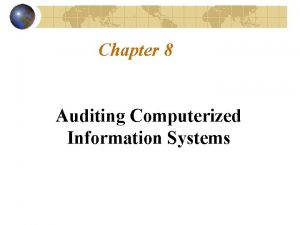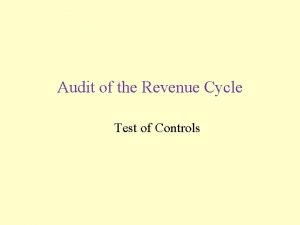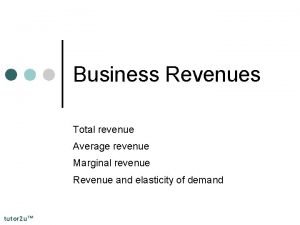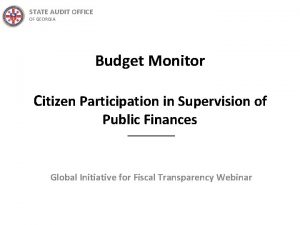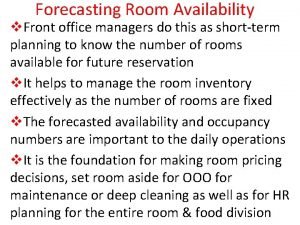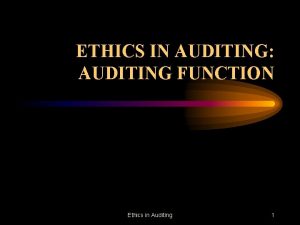AUDITING OF STATE REVENUE State Audit Office of








- Slides: 8

AUDITING OF STATE REVENUE State Audit Office of Estonia

Statistics of state revenue in Estonia 2 n Estonian state revenue is mostly dependent on taxes Fiscal year 2003: n Percentage of tax revenue in state revenue: 87% n Percentage of total state revenues to GDP: 42%

Tax Revenue 2003 3 Type of tax Percentage of tax revenue in 2003 Social tax 39. 7 VAT 31. 1 Personal income tax 10. 9 Corporate income tax 6. 0 Other tax revenues 12. 3

Mandate of State Audit Office of Estonia 4 The mandate of SAO is set out: n State Audit Office Act n State Budget According to State Budget Act SAO has an obligation to present to the Parliament an opinion on the state budget execution report (includes report on revenue collection)

Mandate of State Audit Office of Estonia 5 SAO has access to: n all accounts and records of Tax Administration n all accounts and records of Individual taxpayers n on-line data of accounts and records of Tax Administration

Resources and organisation 6 n SAO has no special unit or auditors for conducting the revenue audits. n Financial audits of state revenue are conducted by financial audit department.

Audit objective 7 n Audit objective: 1) Are the collected revenues recorded properly? 2) Are all collected revenues transferred into the state budget on the right time and in the right amount?

Co-operation between SAIs 8 We propose following forms of co-operation: n Training programs n Joint working group for adopting already existing guidelines and methodology

